
Ancient Egypt: A Bustling Cairo Market, and the Blonde’s Take on Veils and Hair
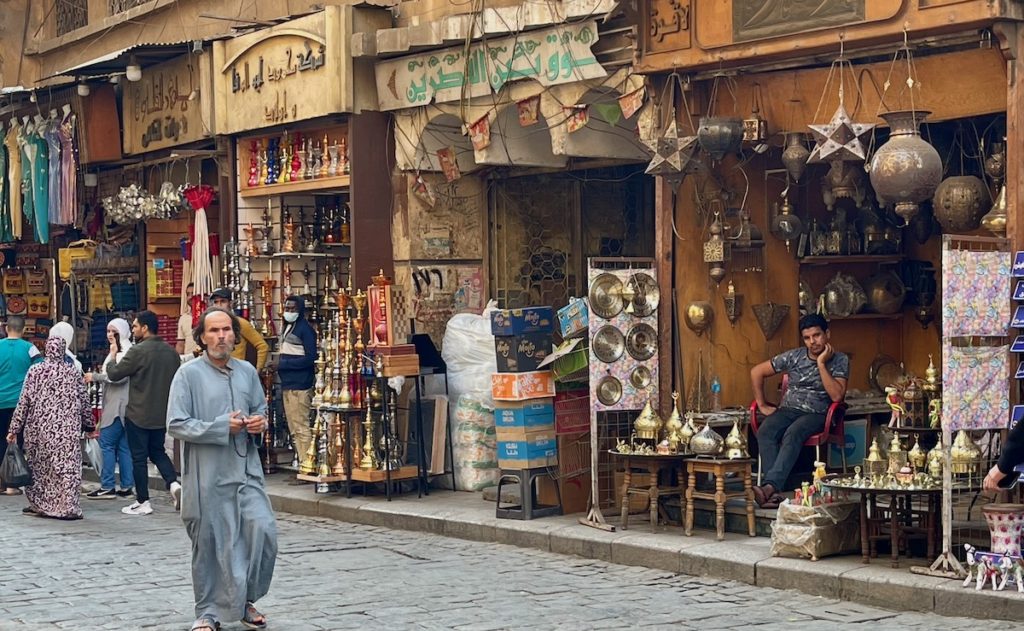
A woman peered at me through the eye slit in her black veil: What must she think of this older American woman with a head of bright blonde platinum hair?
As we strolled down al-Muizz Street, one of the oldest streets in modern-day Cairo, every woman I saw – our group excepted – wore a hijab, or veil, over her hair. Only a few ladies wore what the lady peering at me wore: the full black niqab covering her whole face, a billowing black robe, and gloves, but they all had scarves on. I spotted a wisp of bangs peeking out of a hijab here or there, but hair? Totally covered.
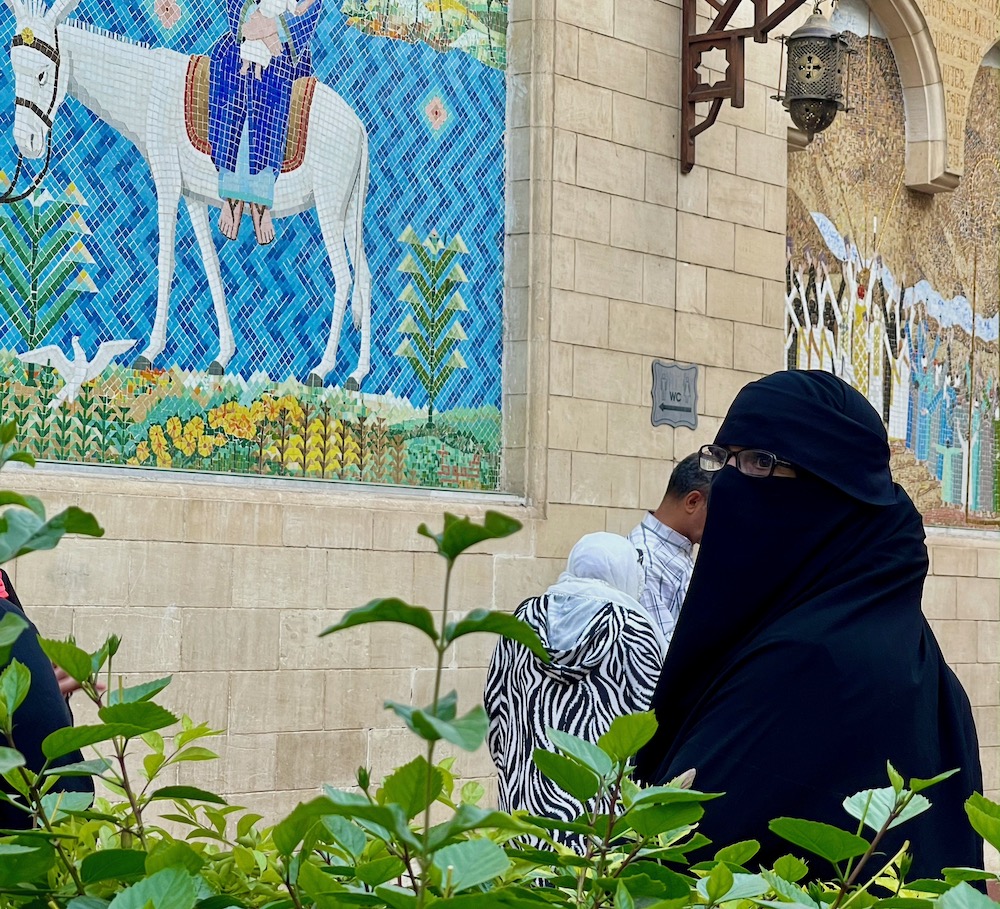

So I couldn’t help but be struck by the idea of life without hair. My head of blonde hair has been part of my identity since I was a young girl, when the playground monitor reigned me in by shouting “Hey Blondie!” So the blonde bit has been a part of me for, well, forever. I have always been free to be blonde, to show my hair, and to get busted for causing trouble on the playground, as an American girl.
And I wore a hat and veil when I married Padre, but not over my face and it certainly didn’t hide the blonde hair. Why do we still include the veiling tradition in wedding ceremonies, even today? I had questions.
Other women in our group were bursting with queries as well. So our Gate 1 guide Neveen shared her personal take about veils and changing cultural norms, as an Egyptian woman who chooses not to wear the veil. My attitude about this starkly visible cultural difference shifted due to what I learned, and let’s just say, for now – it’s complicated.
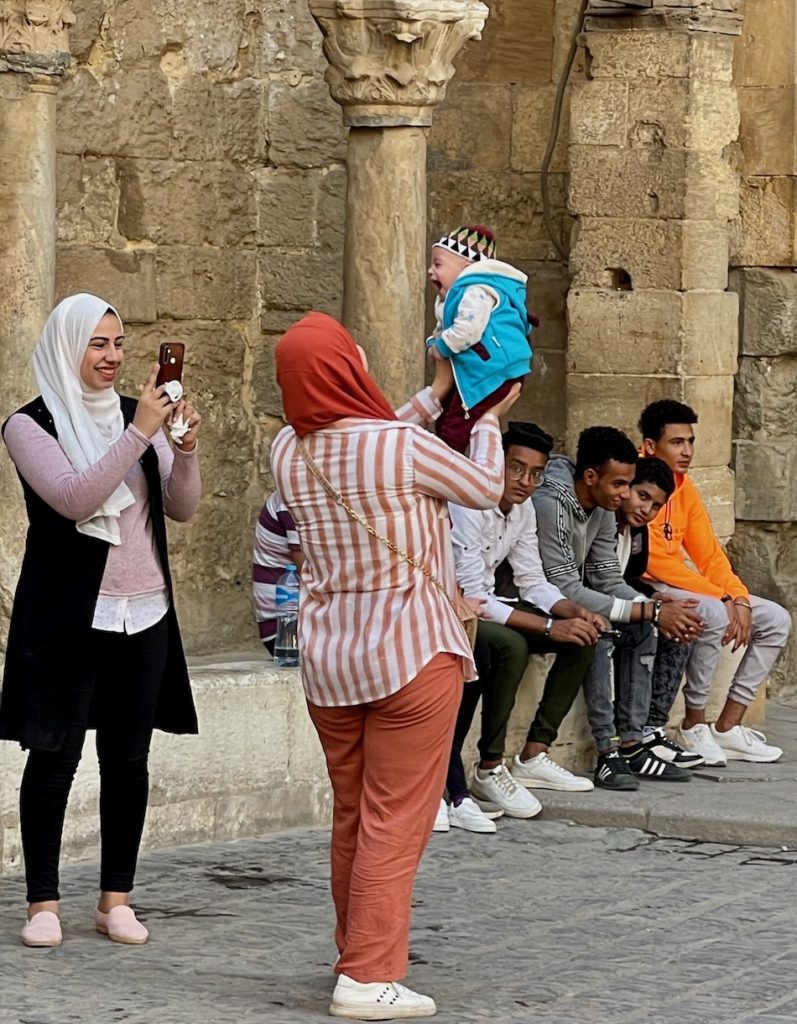
My take on all of it coming up, but first: a stroll through an ancient winding bazaar and souk, and a walk down the main thoroughfare of Cairo’s former ancient walled city. These ancient streets should not be missed – one of the most fascinating sights so far on our Egypt tour.

A MEDIEVAL MARKET AND 17TH CENTURY FLIRTING
We ate our lunch at a picturesque Nile River floating restaurant, and then the big bus dropped us off for a walk through the market. No big deal, right? A group of Americans, pockets stuffed with cash, heading off for a stroll through one of the busiest everyday markets in Cairo, ground zero for terrorist attacks in the past. What could possibly go wrong?
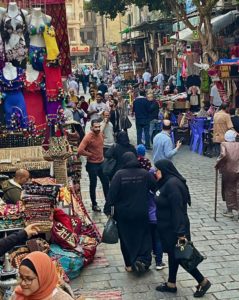
Actually, nothing went wrong, even though when we piled off the bus the stares and attention were palpable. Many of the locals fell quiet, some stared, and then one friendly gentleman boomed out, “Welcome Back, America!”
So all was well, and hey, we did have cash, so we were best friends with the locals during our sightseeing/shopping expedition. And we had Neveen’s instructions to help us.
She told us to always barter in the market or on the street, but usually not in shops, such as those in a hotel or mall. If a market vendor says $10, you offer $4, and go from there. I did just that, and the vendor engaged with me pretty much just as Neveen said he would. Very fun! I purchased two scarves, and Neveen said I could have done better but that I did ok. Yay! Nordstrom might charge $100 for scarves of this quality, so I was a-ok with ok.
We seemed to time-travel back to the medieval era as we navigated a labyrinth of narrow cobblestone streets, deeper into the bustling Khan al-Khalili market. The 14th century market bursts with medieval Islamic architecture, mosques and madrassas, tiny shops, and the remains of ancient city gates and walls, so our tourist heads swiveled every which way. Too much to see, all at once.
Along the market’s outer edges we found vendors selling tourist trinkets such as alabaster pyramids, sphinx figurines, and hieroglyphic doo-dads, but the deeper we went the more authentic the goods on offer became. Once we reached al-Muizze Street we oohhed and ahhed as we passed dedicated gold, silver, copper, carpet, and spice districts, hanging glass lanterns in every hue, hundreds of hookah pipes lined up, and polished antiques everywhere we looked.
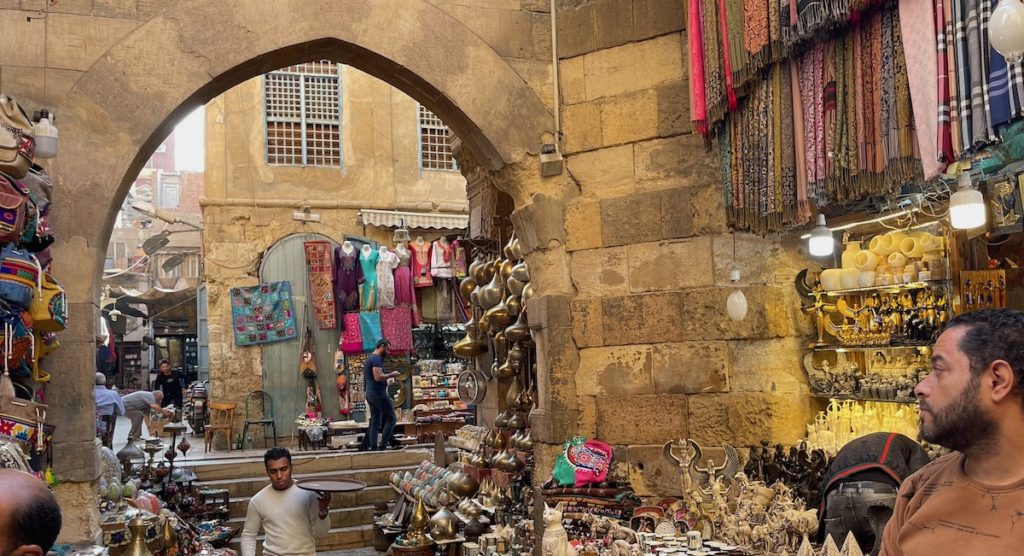
Wares spilled out of small shops onto the cobblestones, and it seemed as if miles of goods were on offer, much of it hand-crafted by local artisans. Truly a tourist shopping paradise, although we saw many more locals than tourists on our visit, especially on the back streets.
And the history! We passed under soaring limestone arches, and looked up at old wooden window alcoves equipped with peep holes on the bottom. The peepholes were for the 17th century women sequestered inside, so they could ‘peek’ at potential suitors and signal if they saw a cute guy by dropping a pebble down to the street. So 17th century Egyptian flirting, as it were.

And that brings me back to the veiling of women, since I tried to imagine what it might have been like not to be allowed to go out. Ok the peek hole was so 17th century – women’s roles were much more proscribed back then, weren’t they? And today I saw women everywhere, although we did notice the ladies seemed to disappear once we reached more conservative areas in the countryside.
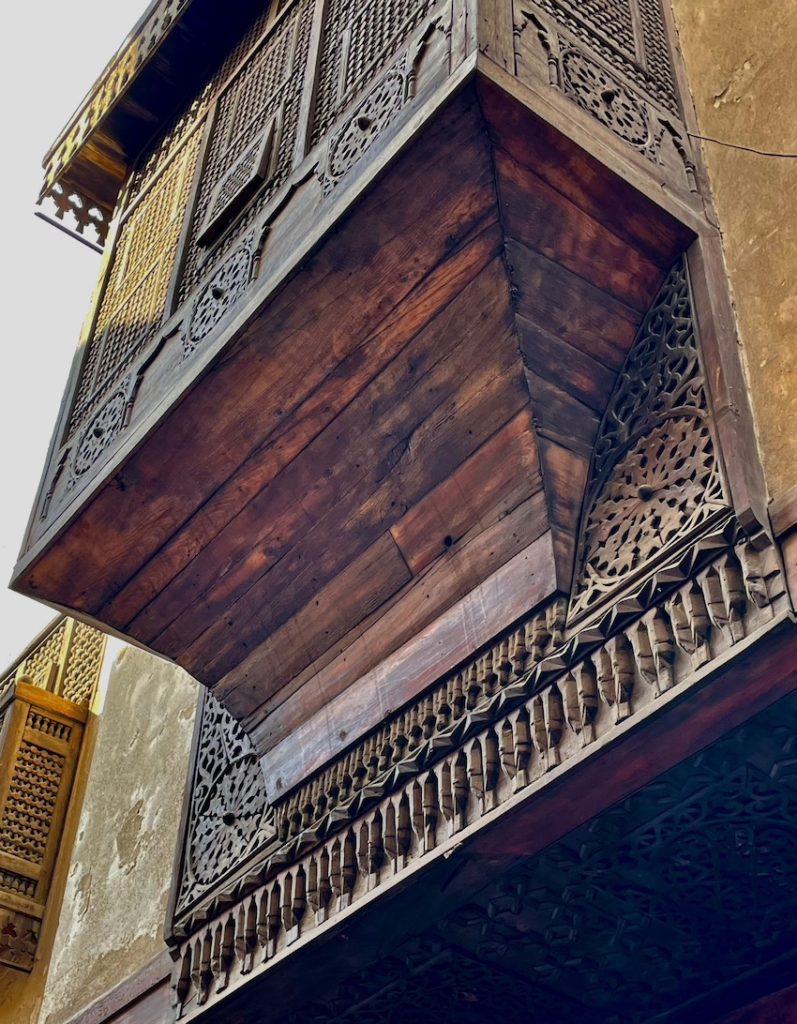
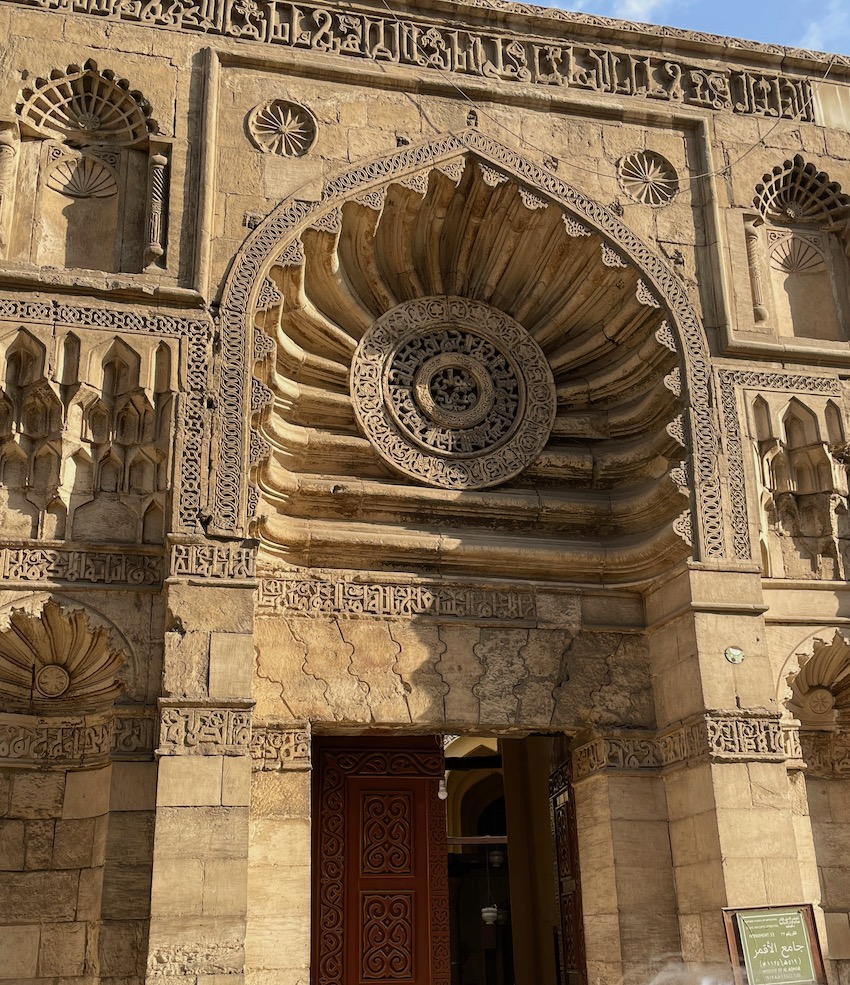
SHIFTING ATTITUDES AND POLARIZED OPINIONS (SOUND FAMILIAR?)
According to Neveen the conservative movement began in the 1970s, when men who left Egypt for Middle Eastern economic opportunities returned with more conservative religious notions. Before then liberal attitudes prevailed, just as they did in the States. In the 1960s, for instance, Neveen’s mother married, clad in a revealing micro-mini skirt. Today, and for many years now, her mother wears a veil.
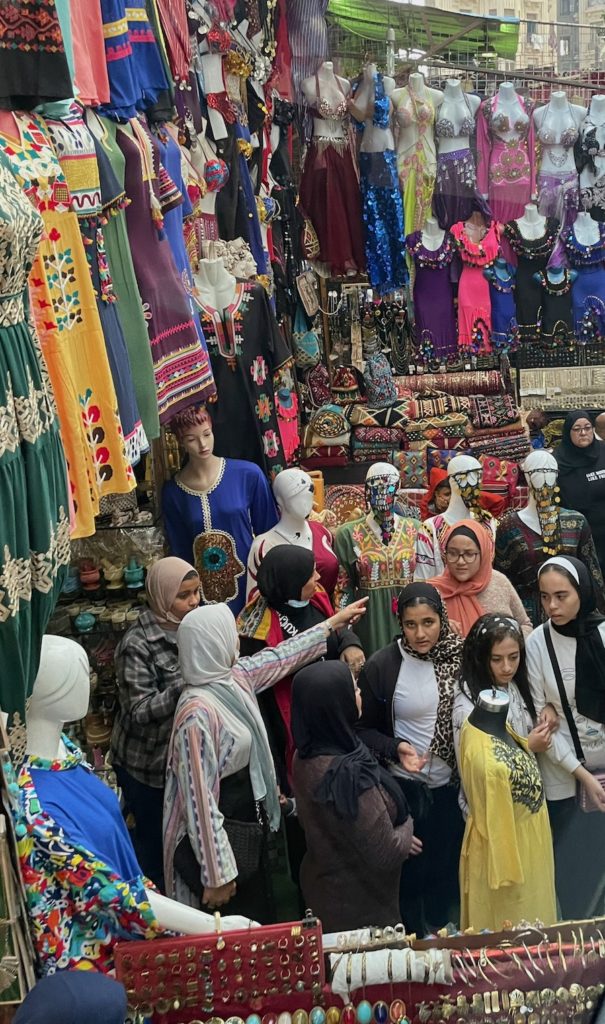
When the Islamic Muslim Brotherhood took power after the 2011 Revolution, the pressure for women to cover up increased ten-fold. Neveen became terrified to walk the streets alone unveiled, afraid she’d be harassed or even hit. She also participated in protests and dodged live bullets, a story I’ll tell in a later post.
Once the Brotherhood’s leader, Mohamed Morsi, was forced from power in 2013, she could walk freely down the street again without fear, but Egyptian society’s polarization continues. Neveen still feels some pressure, and she shared how one faction of her family held an ‘intervention’ a few years ago to pressure her to don the veil. She also told of a potential suitor who presented her with a gift – a scarf! – on their first meeting, and informed her that his wife would wear the veil.
Needless to say, Neveen sent him packing, and she remains single today. She has served as a Gate 1 tour guide for 25 years, a job she adores. She greets us each day with, ‘Ok, now family, we are going to……,” and she seems determined to show us her beautiful Egypt in ways that will help us love Egypt as much as she does (we do love it). I also suspect that Neveen would fit right in on that elementary school playground with me, pushing the limits as usual.
TO VEIL OR NOT TO VEIL?
So why do Egyptian wear, or not wear, veils? Seems there are just about as many reasons as there are different colors of scarves.
Over 90% of Egyptian women wear at least a headscarf, and many of them do so because it is a way to show closeness to God. I thought of a church group back in my small hometown, whose women wear headscarves and dresses covering the ankles, and I’m guessing they dress that way for similar reasons.
Then there are women who wear veils to ward off advances and to demonstrate modesty. While the idea that women are responsible for men’s lack of control is one that needs to die, it hasn’t died, not yet. So there’s that. And some women wear veils as a fashion statement – really. Check out some high-fashion hijab styles, here.

I sensed a certain pride in Egyptian women’s ideas concerning modesty, though. Veiling is a way to show a contrast to other women in the world, women who show too much skin in undignified ways that shock. (Those brazen hussies. Had to add that, for fun.)
Yet women – and men – should be able to wear what they want, as long as they aren’t completely nude. We do have some limits even in America, after all. I mean who wants to look at nude Americans, unless you’re a sad guy paying $ at a stripper club?
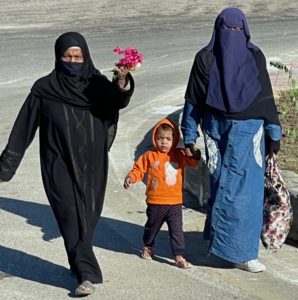
And American women do veil sometimes – think weddings. Turns out that wedding veils spring from some of the same ancient sources that modern Egyptian veiling does. Brides were wrapped from head to toe to represent the delivery of a modest and untouched maiden to the groom (Hey! What about HIM?). Today, American brides choose – or choose not – to veil, whether they’re modest or maiden or whatever.
That reason – that it’s YOUR choice, not someone else’s – lines up perfectly with what I think is the most important reason Egyptian women veil. Believe it or not, it’s a freedom issue. Shouldn’t women, and men, be able to wear what they want?
If she feels closer to God when she wears a hijab, shouldn’t a woman have that choice? Roiling political battles have been fought in Egypt and other places in the world (France comes to mind), because more liberal forces have fought to ban veiling in public places, such as schools. As Egypt swings between more liberal and conservative stances, those battles rage today, and efforts on the part of Egyptian government to ban veiling are met with fierce resistance.
Neveen told us of a time before the 1970s, when a person’s religion, a woman’s choice to veil or not, was personal. It was no one’s business what religion you practiced, or if you wore a veil, or a micro-miniskirt. Then the 1970s shifts began, and who knows if it will ever get back to the days of live and let live?
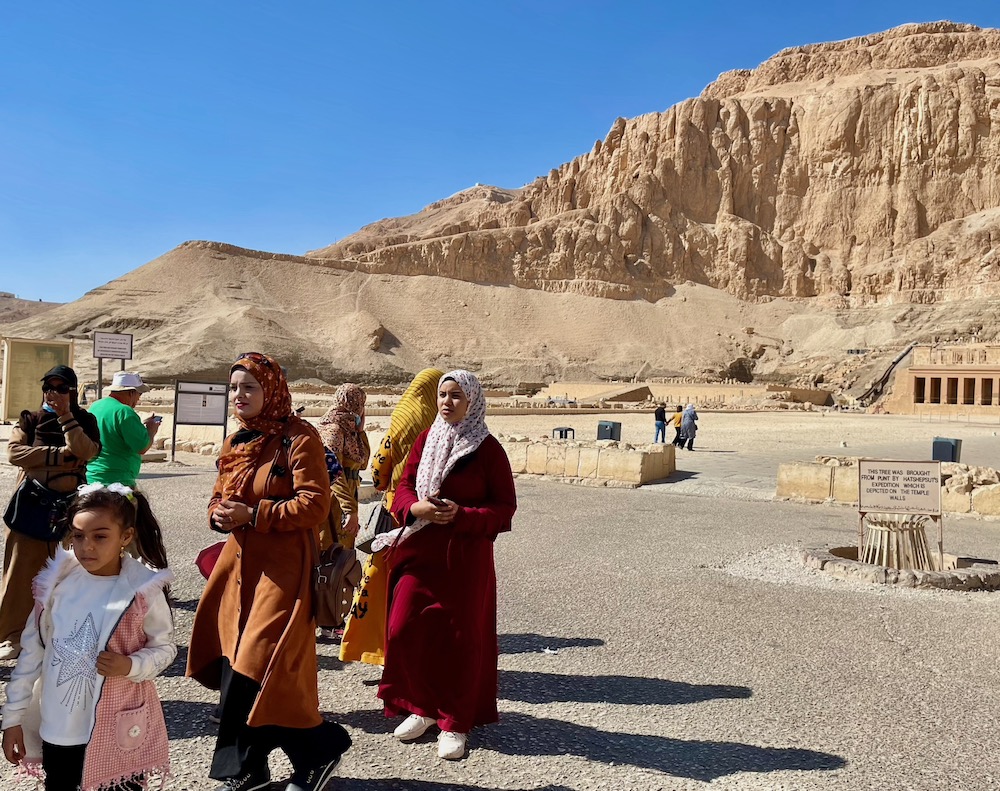
Since 2013, Neveen feels free to go unveiled, although she admits to dealing with some pushback over her role as a female, a guide traveling alone. That does not stop her, though. So she endures the disapproving looks of family once in a while, and trust me – this wonderful lady can deal with that, no sweat.
COME VISIT EGYPT! RIGHT NOW!
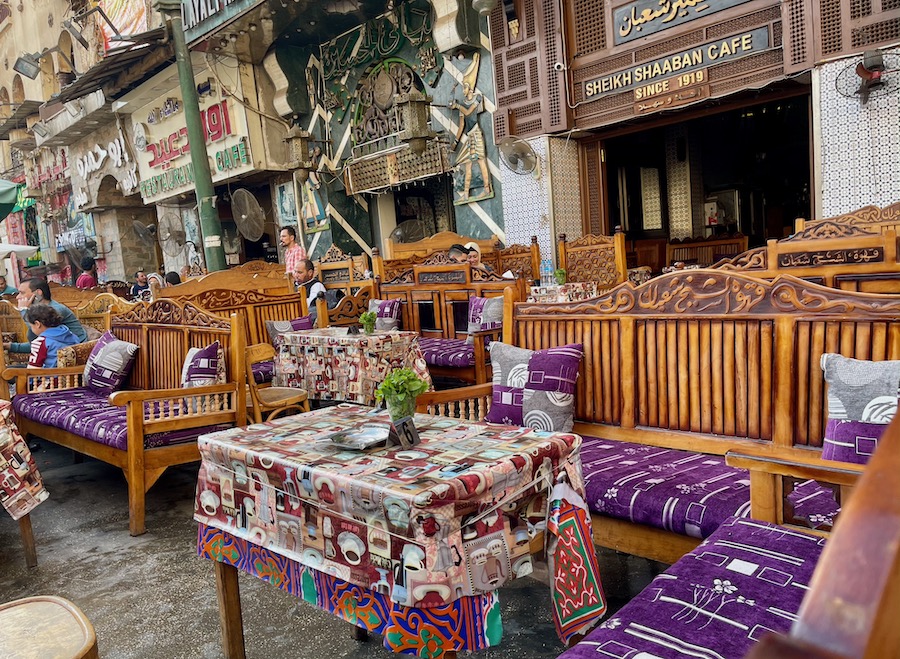
Times are changing, indeed, and fast. For instance: I Facetimed my surprised daughter back in the States while we sipped sodas in a market tea shop. Who would have ever thought I’d be able to do that? Neveen and another Gate 1 guide joined in the Facetime banter, laughing as they ‘ordered’ my daughter to ‘Come Visit Egypt! Right now!’ And we would be the first to agree that she should, since Egypt is such a wonderful place.
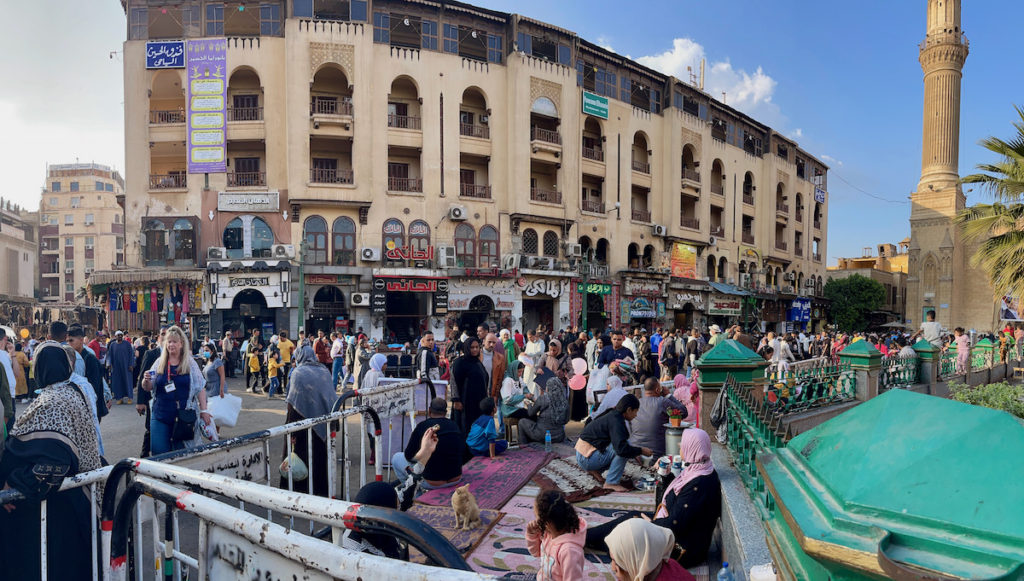
The only moment so far in the trip when it felt tense came at the end of our market walk, and it wasn’t the locals, and it wasn’t us. It was our security detail, who accompany us everywhere, with machine guns, and sometimes bus convoys. I’ve grown used to it, even though I loathe all things gun. Our police escorts wear crisp pressed suits and shiny wingtips, so they look great! But under the shiny suits, automatic weapons are always at the ready.
As we waiting to board our bus, local children pressed in and darted under the heavy metal barrier that separated us from the market crowd. The children were laughing, attempting to sell us one more trinket, but you could just feel all the security guards tense up. I suspect that a market scene like this was just the sort of moment when terrorist attacks occurred in the past, so they were on alert just in case. Maybe, maybe not, but it felt….tense.
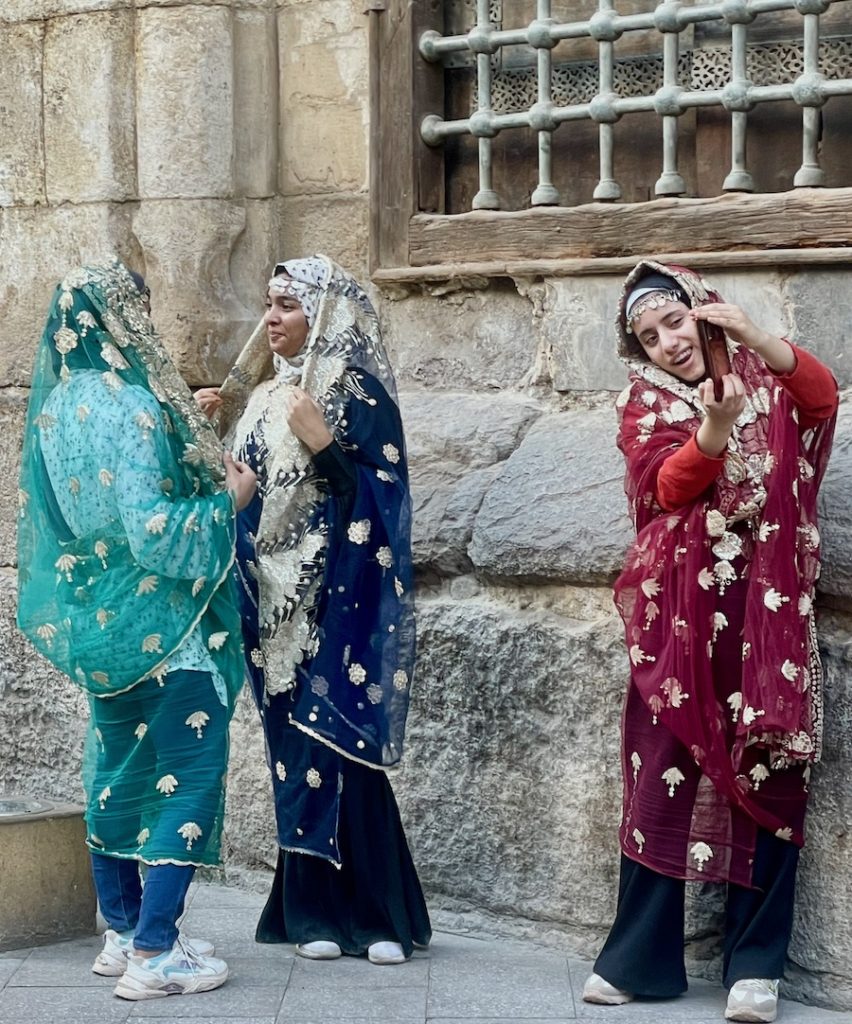
Except for the tense ending we loved our market walk, which included holding our collective breath as our bus driver steered our enormous bus down and out the tight market streets at the end, inches to spare.
And then there were the moments when I made eye contact and smiled at veiled Egyptian teenage girls clutching their I-phones, some wearing what looked like too much Tik-tok makeup, just as American teenagers do.
I saw more than one of them nudge a friend after I smiled at them, as if to say, ‘See, she smiled at me!’ Would have loved to sit and chat awhile. I sense that despite the veils and odd dress (to me), these girls are very much like I was as a teenager, even though they don’t show their bangs.
Next up: Luxor! An early flight with an unheard-of early wakeup call at 3:45 AM.
Whew. Gate 1 travel is not for the weak of heart. Or those who like to sleep in. Yet if you love to see amazing, marvelous new lands, come to Egypt! Right Now!
Thanks as always, everyone, for following along.


